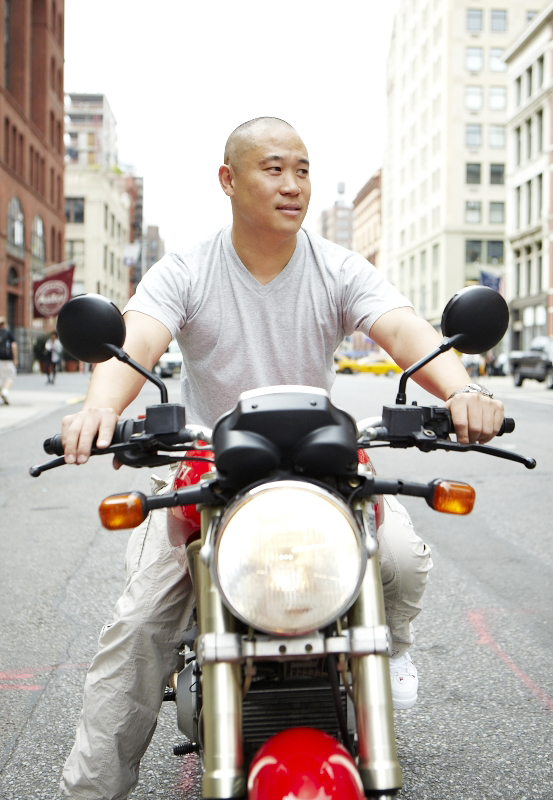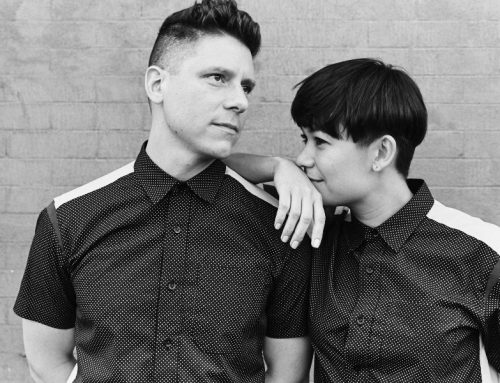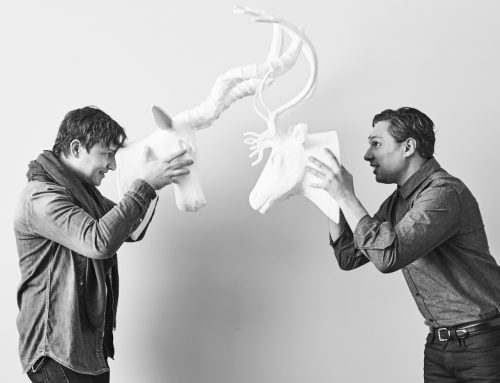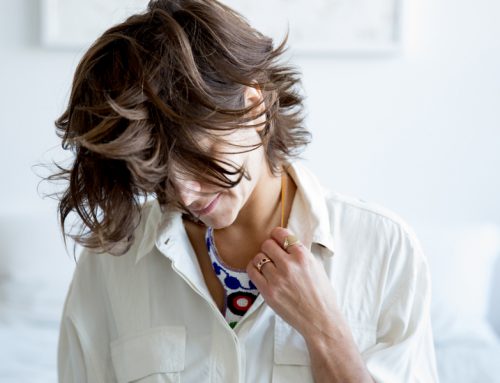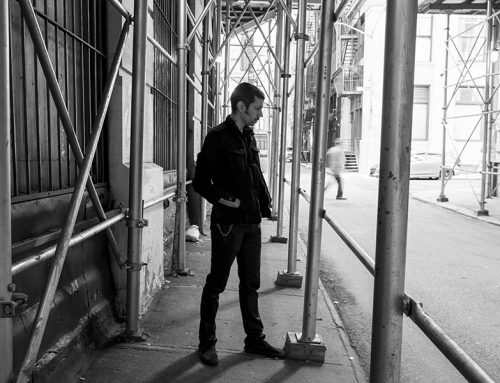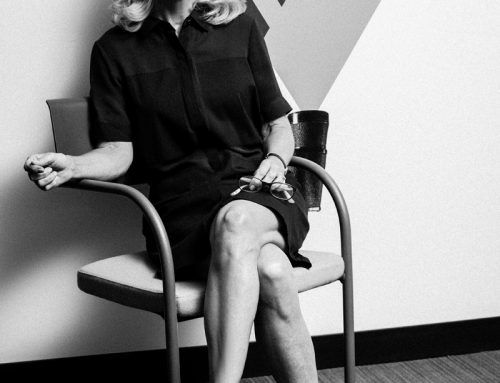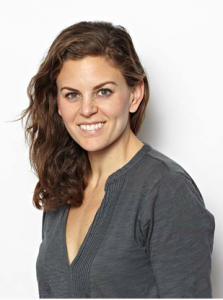Q&A with John Lin:
Please tell me a little bit about yourself.
My name is John Lin. I was born in New York, about an hour north of the city. Except for the 4 yrs in college, I’ve lived in NYC all my life.
What does your job entail as the Creative Director at Fila?
I work on everything — national ad campaigns, packaging, in-store, online, outdoor, branding, internal marketing. I just finished working on a video series for the web. So I work on a lot of different mediums.
How do you describe your self as an artist and the kind of work you do?
Well, I would not describe myself as an artist. I have a client, and at the end of the day, my work needs to sell either a product or the company. I try be artistic with my work, but it’s far from art.
How did you decide to get a motorcycle?
Before graduating college, I had little interest in motorcycles. Then these two photographer friends I met after I moved to NYC both had one – I learned how to ride and I was hooked. I was going to get a Honda, but then waited a year to get the Ducati. I had talked about it so much during that year, that friends chipped in money to get me a helmet for my birthday. So I kind of had to get one. It is both the most stupid and the most awesome decision I’ve made.
As for how I decided on the Ducati – the first time I saw one was parked outside SoHo Billiards on Houston St. I must have stared at it for 15 minutes. The design was so hypnotic.
There are dozens of reasons I could give you, but honestly, motorcycles are cool and the Ducati is beautiful.
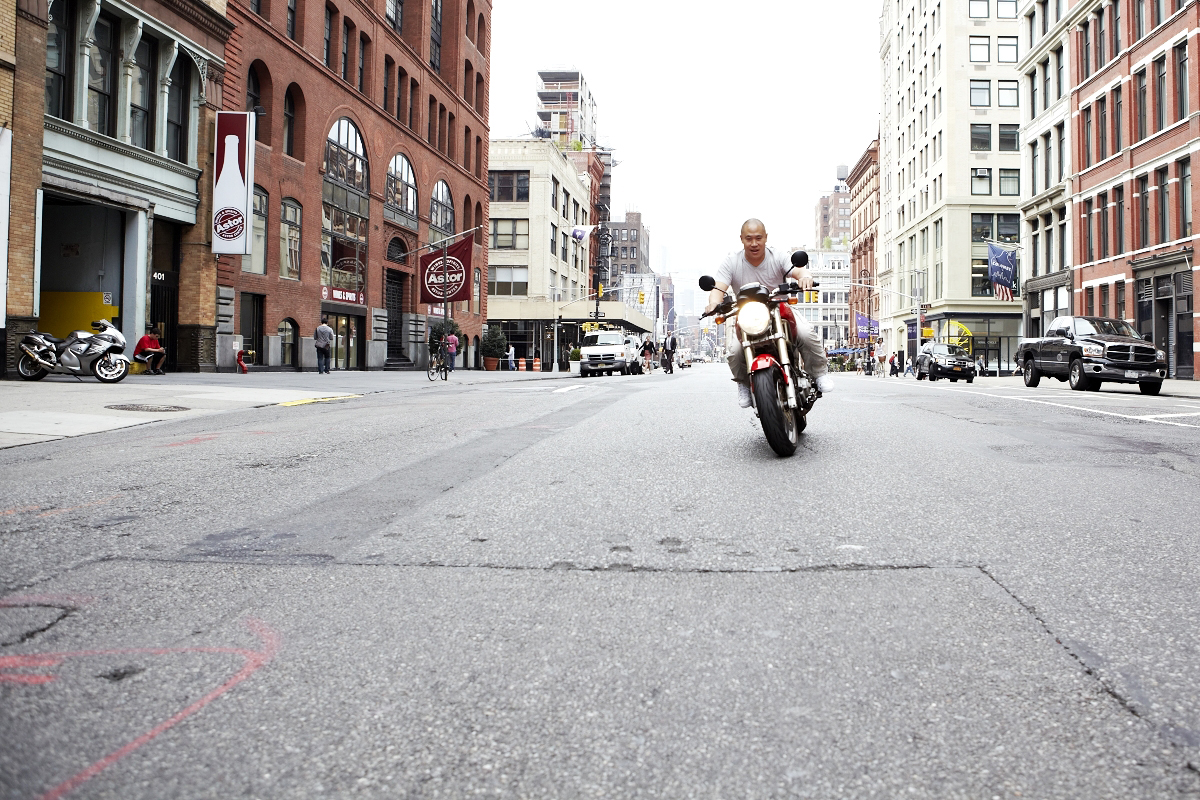
What does your motorcycle have to do with creativity?
Well, the design of it kind of follows my aesthetic – the bike has classic lines, but with a modern twist.
Riding the motorcycle pretty much involves avoiding death at every moment, so your mind is pretty occupied with that. The wonderful thing is, while worrying about bike angle, revs, corner approaches, road conditions, other vehicles, etc., you stop thinking about all the other life-stresses. A good ride is cathartic, and a clear mind is receptive to ideas.
Why does working in advertising appeal to you?
Some kids had posters on their walls growing up. I clipped out ads and taped them to the wall. At the time, I thought it was the most creative outlet that was still a profession.
What other creative things are you doing outside of work?
Absolutely nothing. When I was younger, I was able to work after I worked, after I got back from my work. Nowadays, my age cannot sustain that level of energy and focus. However, I do find inspiration in almost every part of my day. I remember coming up with a concept for a project I was designing a few years back – waiting to cross a street in Chicago and seeing a bus covered in soot (which became a stained coaster visual for a smoothie app). I still get ideas throughout everyday life, but now they’re primarily funneled towards the job. The job provides a pretty good platform to get ideas produced.
How did you get to where you are today as the Creative Director at Fila?
My father is a scientist. My mother worked for IBM in Data Systems management. My sister is a lawyer. My family does not quite understand what I do. I’m not sure where it came from.
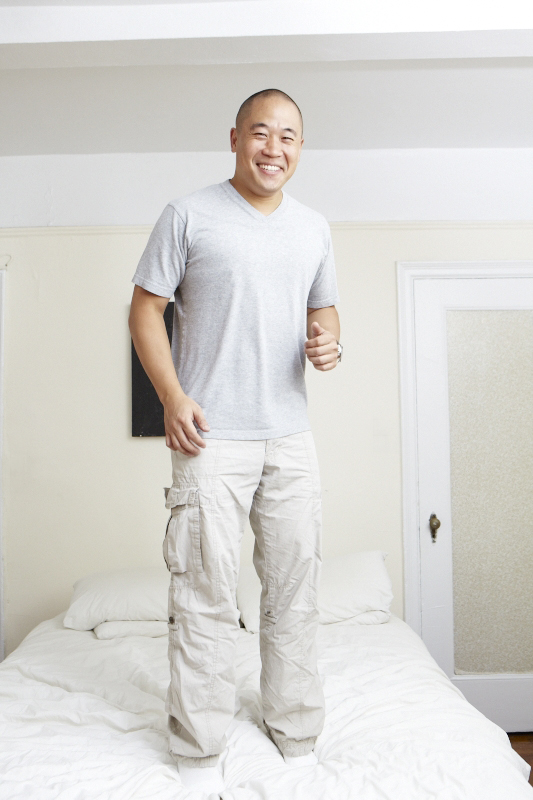
What has been your career path?
It was not a direct path at all. I forced my way into a job at Allure magazine the summer of my sophomore year in college (’91). At the time, I was undecided whether or not to pursue magazines or advertising. I decided after graduation to go into advertising. Then Vogue magazine called and that was that.
Since then, I’ve been working mostly in magazines, and also fashion advertising (which is not at all like agency work). I ran my own studio for a while, a dozen years or so. I worked on almost everything – from CDs to books to catalogues. I’ve done graphics for skateboards and T-shirts; logos for a shoe store and a hair-transplant doctor. I worked on a Russian news magazine, a photo mural for the Atlanta Olympics, and a cookbook to give you abs. There was no master plan at all.
For a while, I thought my work was spread too thin, not having a singular focus in one medium. Now, I find the broad skill set an asset in my career.
How did you figure out what you wanted to do?
Here were my first career choices:
Car designer, ages 5-11 – I would design cars down to their wheels & dashboards. It got so bad, that after I was recognizing cars in the dark by their tail-lights, my dad hid his subscription to Road & Track.
Sneaker designer, ages 12-14 – I started running, then the 1st Air Jordans came out. The head shoe-designer at Fila has described sneakers as “cars for your feet.” (He’s a car-nut too.)
Cartoonist, ages 14-20 – I started reading Bloom County, and then Calvin and Hobbes. I used to draw my own 4 panel cartoon in high school & show select friends in order to get feedback. I read somewhere that Bill Watterson, the creator of C&H, was drawing bottles of bleach for a supermarket circular, all the while submitting to the newspaper syndicates before he hit it big. I decided a career in advertising or magazines would be a better temporary staging area before my strip went national. I had a weekly strip in the college paper for 2 years. I then realized I had to be happy in order to be funny, and college wasn’t exactly a happy time. So I decided to dedicate myself to mags and advertising.
Was there anyone in particluar who influenced your life, therefore gave you direction?
My cousin, and architect & professor in Los Angeles, had a heavy creative influence when I was 5 yrs old. He was the coolest guy in the world, and drawing and making things was therefore super-cool.
How did you learn to do what you do?
Since I was in high school, if I saw something that I liked, I would examine what exactly I was responding to; If I didn’t like something, I would try and figure how to make it better. I still try to approach work that way, both with mine and the other things I see.
There were maybe 3 bosses in my career that taught me, everything from typography to client relations. I’ve had many, many bosses that taught me what not to do. Design (and especially fashion) are sadly not especially nurturing fields.
I feel like the best sign is if you look at past work and are dissatisfied with it. It’s the most honest (and embarrassing) indication that you’re still growing and learning.
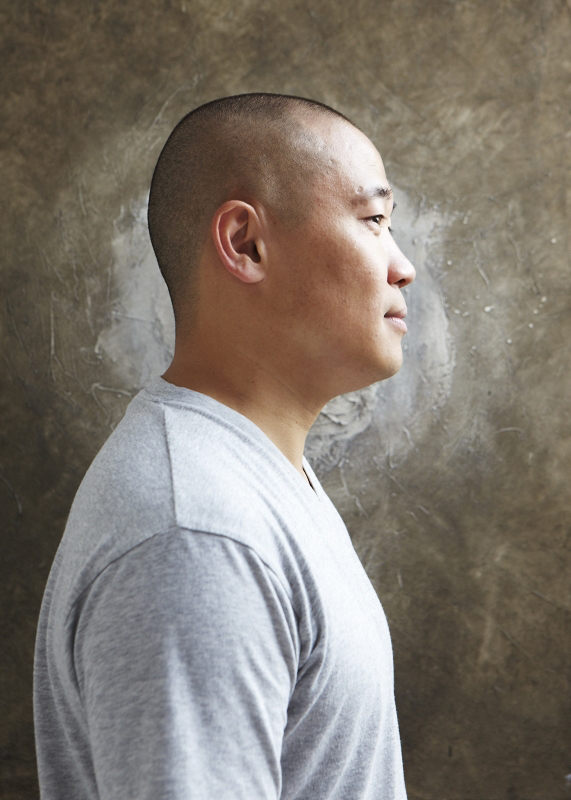
Please describe how your creative brain works.
In order to “think outside the box”, you need to define the box first. When you know the parameters, only then can you begin to explore the possibilities. An art director friend of mine once had a client with unlimited budgets. I have no idea how to create under those circumstances. My experiences are more like the following:
— David Mamet said “A traditional recipe for genius: inspiration, a plan, not enough time.” — The client wants the project to be done: 1) Done Quickly; 2) Done Cheaply; 3) Done well The rule of 3 is: You can only pick 2.
I feel like all this is problem solving, like anything else – mechanical engineering, political science, etc. You just use different tools to fix the issue. Design has to be both left and right brain. It has to be smart; it has to be informed. The designer is positioned at the focal point of photography, writing, corporate branding, campaign messaging, etc. – it’s up to him/her to put it all together and have it make sense.
What are you currently working on?
This past year I’ve been working closely with the Product Director and VP of Footwear Design in developing our Men’s Heritage line. Earlier this year, we shot Jerry Stackhouse, a Fila athlete first signed in ‘96 whose signature shoe we were re-releasing. Later this year in California, I’m going to direct a shoot of another former Fila athlete, current Mayor of Sacramento Kevin Johnson. I also just finished directing a 12-part film series that showcased various independent stores all across America.
Describe your style. Is your personal style different from your professional style?
Style, like clothing? There are still some things I have, that I won’t wear out of the house, let alone to work. My inner me wishes it was still ‘93 and I was still 22. Other than that my motto is “There’s a time to wear shoes, and a time to wear sneakers.
As for style as it pertains to my work, I design for the client. I have worked on YM, Vogue and Maxim magazines, and those pages do not look the same. I do try and approach design not from what could be done, but what should be done. Make look cool, but not for cool’s sake; Design with purpose, blahblahblah and a lot other boilerplate design- er-isms.
Now as my own client, I am horrible. It took me 10 years to design my 1st business card, and my email changed 7 years ago & I still haven’t decided on a new design. And that is why I do not have any tattoos.
What do you love about the work you do?
At the end of the day, creating something out of nothing is kinda neat.
Anything unexpected about the work you do? Something you didn’t know before you started on this path?
3 things … 1) Back in junior high when I wanted to be a sneaker designer 2) My interest in rap music in the 80’s & 90’s 3) My obsession with basketball and the NBA around the same time
… these 3 things have REALLY helped me out in my current position. This has been a pleasant surprise.
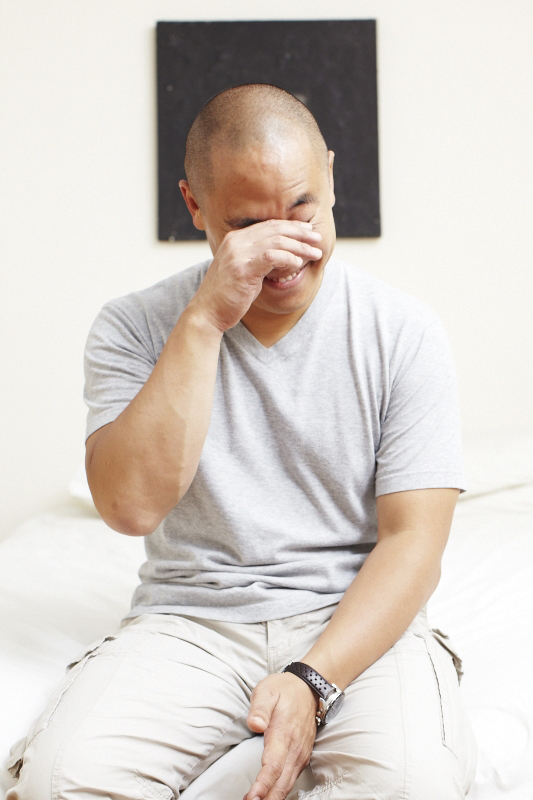
Where do you get inspiration?
I try and draw inspiration from things beyond just advertising and graphic design – right now it’s mostly film and architecture. Music can also have a profound effect of my work, so DJing while working on the project is a crucial step.
I’ve become more and more interested in the creative process itself, and how those processes in different fields can be applied to my work habits.
What is your dream project?
If I was dreaming, I would like to direct a feature-length movie.
Any interesting stories about the work you’ve done or an experience you’ve had?
Sure. I started a chapter in my auto-biography. I wrote it back in ‘09. It’s about getting fired from Vogue magazine. http://tinyurl.com/mv2wj5l
How do you define success?
To give a quick glimpse in my upbringing … since I was a kid, I never wanted to specifically define success, because if I didn’t achieve exactly that, then I would have failed. At that time, my example was if I wanted to be a millionaire by the time I turned 30, but I didn’t achieve that til I was 31, does that constitute failure? Nowadays, I still follow that thinking, but the rationale is more like – I would hate to hold myself to the definition of success I had from the past.
When I was younger, I was motivated more from a fear of failure than a desire for success. Now, I just want to do the best I can & try not to be an asshole along the way.
What is the best advice you’ve ever received?
My cousin, the architect, lived with me for a few years when I was 6 yrs old. I really looked up to him. So I made a model car and showed it to him, hoping to impress him (he was r-e-a-l-l-y good at building things). He took a look and said, “The best thing to do, is to throw this away and start over.” It may have been a little harsh (he was 13), but to this day, sometimes I beat an idea into the ground & hit a wall, and the best thing to do is throw it away and start over.
That may not be the best advice, it certainly was one of my first. I’ve gotten great advice through the years. I have them all written down in my phone.
To learn more about John Lin and to see his work, check out http://johnlin-nyc.com and www. FILAis.com.

